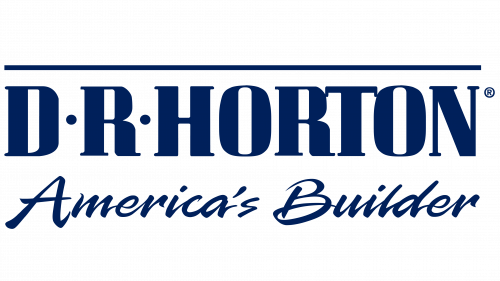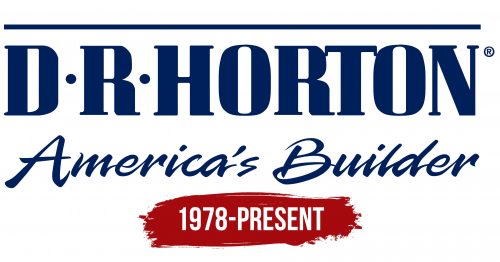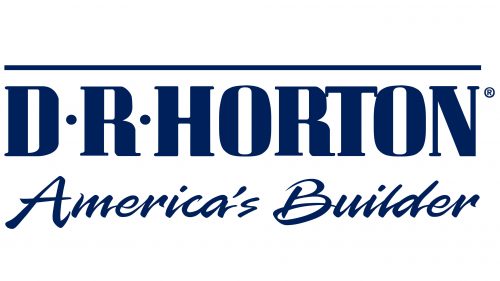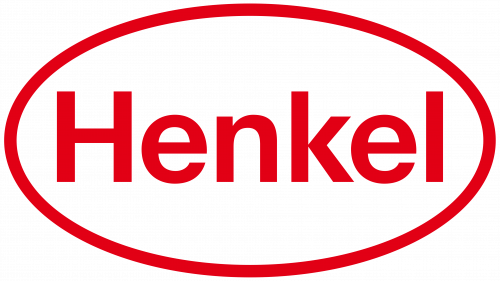The DR Horton logo embodies a harmonious combination of elegance, prestige, and high-quality standards. The emblem highlights the reliability and strength of the structural framework and a strict adherence to building standards. Special attention is given to sophistication and refinement in interior design, which sets the developer’s homes apart from competitors and attracts discerning buyers. The visual mark points to the durability and stylishness of the projects, along with the trust in the brand, which guarantees its clients confidence and comfort in their new homes.
D.R. Horton: Brand overview
D.R. Horton’s history began in 1978, when Donald R. Horton founded the company in Fort Worth, Texas. With a background in construction, Horton set out to build affordable homes for middle-class families. Initially, the company focused on building homes in the Dallas-Fort Worth area.
From the start, the business built a reputation as a reliable homebuilder, offering high-quality homes at affordable prices. Despite the economic downturn of the early 1980s, the company managed to survive, a notable achievement for a young real estate company.
Throughout the 1980s, the business steadily expanded. The company began entering other southern states, using a careful approach to growth by vetting new markets and focusing on quality. A significant milestone came in 1991 when it went public with an initial public offering (IPO) on the New York Stock Exchange. This event provided the company with the capital it needed to accelerate growth.
The 1990s were a period of rapid expansion. The company adopted an aggressive acquisition strategy, purchasing regional developers to increase its footprint. By the decade’s end, the company was active in more than 20 states.
In 2000, the company made one of its largest acquisitions, purchasing Schuler Homes for $1.7 billion. This acquisition strengthened its presence on the West Coast and in Hawaii. Around this time, the company expanded its offerings beyond single-family homes to include master-planned communities and multifamily developments. 2002, the company’s inclusion in the S&P 500 index underscored its growing influence in the U.S. homebuilding industry.
Throughout the mid-2000s, the company continued its acquisition-driven growth. By acquiring regional developers, it diversified its offerings and reinforced its presence in key markets.
The global financial crises of 2008 and 2009 and the real estate market’s collapse posed significant challenges. However, the company’s strong financial position and adaptability helped it weather the downturn. The business scaled back its operations and focused on managing costs and liquidity during this difficult period.
As the economy began recovering in the early 2010s, the focus shifted to affordable housing to meet consumer demands. During this time, the company launched Express Homes, a brand aimed at first-time homebuyers with lower-priced offerings.
2013, the company introduced the Emerald Homes brand, targeting the luxury home market. This diversification allowed the company to reach a broader range of customers.
The company’s 2014 acquisition of Crown Communities strengthened its position in the Southeast. This move was part of acquiring regional builders and expanding market share in key regions.
In 2016, the business launched the Freedom Homes brand, targeting active retirees. This initiative responded to shifting demographics and the growing demand for senior housing.
In 2017, the company made one of its largest acquisitions by purchasing Forestar Group, a land development company. This acquisition allowed the business to streamline the land development process and gain greater control over its land resources.
From 2018 to 2019, the company continued to experience steady growth, expanding its presence in established and new markets. The business also embraced new technology, incorporating online tools for buyers and offering virtual tours to enhance the home-buying experience.
Despite global challenges, the company saw strong growth between 2020 and 2022. The business adapted to changing market conditions by increasing construction in suburban and less densely populated areas, responding to the rising demand for homes in these regions.
By 2023, the company had become the largest homebuilder in the U.S. in terms of sales volume. The business continues to pursue its mission of offering a wide range of housing options, from luxury homes to affordable options for first-time buyers, across various regions and market segments.
Throughout its history, the company has shown the ability to adapt to changing consumer needs and market conditions. The journey from a small regional builder to a national leader in home construction has been remarkable, driven by a commitment to providing high-quality, affordable homes for American families.
Meaning and History
What is D.R. Horton?
This is a well-known American homebuilder, one of the largest in the country, offering a wide range of housing options, from luxury homes for affluent buyers to affordable options for first-time homeowners. The company’s success lies in combining affordability with high-quality construction, making homeownership attainable for a broad audience. The company operates in multiple states and adapts to market conditions and regional preferences. It is known for its efficient building methods and skill in selecting and developing land in fast-growing areas. The builder focuses on creating entire communities that include parks, schools, and shopping centers, contributing to a complete infrastructure and a comfortable lifestyle for residents.
1978 – today
The D.R. Horton logo is designed in a traditional and solid style, emphasizing its status as the largest homebuilder in America. It conveys a sense of reliability and stability, symbolizing a strong foundation and protection, like the roof of a house. The primary element of the visual mark is the company’s name, displayed in bold capital letters in dark blue, a color associated with dependability, quality, and stability. The serif font underscores the brand’s seriousness and solidity, and its structure resembles strong building blocks, symbolizing the sturdy walls of future homes. Dots are inserted between the letters “D,” “R,” and “Horton,” creating an association with the precision and thoughtfulness of all stages of the company’s work, from design to delivery of completed homes. These elements highlight the company founder’s name, adding a personal touch to the logo.
Above the brand name is a thin horizontal line symbolizing the roof of a house. This line visually links the emblem to residential construction, underscoring the company’s real estate activity. It creates a sense of completeness in the composition and helps balance the visual image.
Below the company name is the red slogan “America’s Builder,” written in a cursive style, giving the impression of a personal promise and connecting the logo with the company’s founder. This element highlights the brand’s commitment to building quality homes for Americans nationwide, strengthening customer trust, and distinguishing the company from competitors. The red color of the slogan and the top line adds energy and a premium feel to the design, contrasting effectively with the blue letters, symbolizing a balance between beauty and reliability.
The D.R. Horton emblem combines strict and confident elements, conveying the company’s long history, market leadership, and commitment to creating quality homes for every American family.





